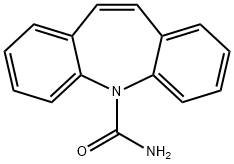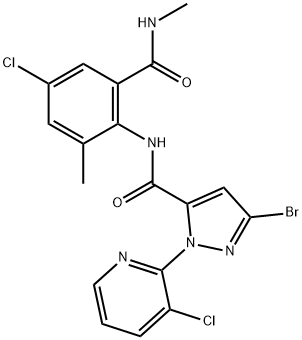A3325112
Carbamazepine , ≥98.0% , 298-46-4
Synonym(s):
5H-Dibenz[b,f]azepine-5-carboxamide
CAS NO.:298-46-4
Empirical Formula: C15H12N2O
Molecular Weight: 236.27
MDL number: MFCD00005073
EINECS: 206-062-7
| Pack Size | Price | Stock | Quantity |
| 5G | RMB46.40 | In Stock |
|
| 25G | RMB141.60 | In Stock |
|
| 100G | RMB365.60 | In Stock |
|
| 500G | RMB1428.80 | In Stock |
|
| others | Enquire |
Update time: 2022-07-08
PRODUCT Properties
| Melting point: | 191-192 °C (lit.) |
| Boiling point: | 378.73°C (rough estimate) |
| Density | 1.1099 (rough estimate) |
| refractive index | 1.5906 (estimate) |
| Flash point: | 9℃ |
| storage temp. | 2-8°C |
| solubility | 45% (w/v) aq 2-hydroxypropyl-β-cyclodextrin: soluble29mg/mL |
| pka | 13.94±0.20(Predicted) |
| form | Crystals |
| color | Almost white |
| Water Solubility | pract. insoluble |
| Merck | 14,1781 |
| BCS Class | 2 |
| LogP | 2.450 |
| CAS DataBase Reference | 298-46-4(CAS DataBase Reference) |
| NIST Chemistry Reference | Carbamazepine(298-46-4) |
| EPA Substance Registry System | 5H-Dibenz[b,f]azepine-5-carboxamide (298-46-4) |
Description and Uses
Carbamazepine is a synthetic iminostilbene derivative structurally similar to imipramine, a tricyclic antidepressant. While unrelated structurally, carbamazepine shares a similar therapeutic action with phenytoin. Carbamazepine was first discovered in 1953 by Swiss chemist Walter Schindler. Throughout the 1960s, antimuscarinic was used and marketed for trigeminal neuralgia and as an anticonvulsant. By the 1970s, it was being used as a mood stabilizer for patients with bipolar disorder.
Used in treatment of pain associated with trigeminal neuralgia. Anticonvulsant
Safety
| Symbol(GHS) |   GHS07,GHS08 |
| Signal word | Danger |
| Hazard statements | H302-H317-H336-H360D |
| Precautionary statements | P201-P280-P301+P312+P330-P302+P352-P308+P313 |
| Hazard Codes | Xn,T,F |
| Risk Statements | 42/43-22-20/21/22-39/23/24/25-23/24/25-11 |
| Safety Statements | 37-24-22-36/37/39-36-45-36/37-16 |
| RIDADR | UN1230 - class 3 - PG 2 - Methanol, solution |
| WGK Germany | 2 |
| RTECS | HN8225000 |
| HS Code | 29339900 |
| Hazardous Substances Data | 298-46-4(Hazardous Substances Data) |
| Toxicity | LD50 orally in mice, rats: 3750, 4025 mg/kg (Stenger, Roulet) |



